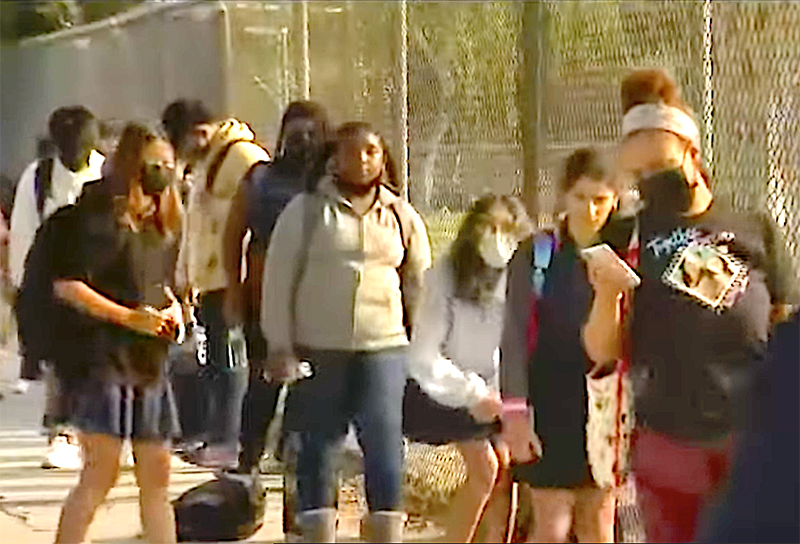
Video Still: Fox News
LOS ANGELES, CA — I consider myself lucky to be able to wake up everyday, and to be responsible for this type of work. I can’t underestimate the privilege, excitement, and joy that I feel about teaching. You’ve probably heard the phrases: “A year like no other,” “It’s been a crazy time for everyone,” or “this is The New Normal.” I think that all of those descriptions apply to the lives of educators and students now.
Education has certainly morphed into something like no other. We have hybrid schedules now, students spitting into tubes to test for COVID-19, and a quiet physical distance. Luckily, Students are resilient. They can take care of their new responsibilities as if these things have been second nature to them all along. As teachers, we see things a bit differently. We see the surrealness of distance, lack of High-fives, collecting of vaccine cards to allow students back on campus after break, and many other mundane tasks that suck the life out of the school experience.
To be clear, these practices have been designed and implemented to ensure the safety of vulnerable students and families. I’ve seen administrators, teachers, and support staff spend hours and hours of planning and implementing to make sure that they’re developing a safe learning environment that lowers the odds of contracting a case of “Rona.” With that in mind, things are qualitatively different compared to the time before the pandemic.
. Students are still reawakening to classroom interactions, and democratic discussions. They did their best to practice these operations while still online during distance learning, but for many, it just wasn’t the same. Students are relearning how to navigate the tension of hard conversations about race, gender, economics, and other inequalities. They’re feeling that tension again in real time, instead of secondhand lurking in the background o a crowded zoom call. Emotional responses are being generated again, sometimes so close to their experience around them that they’re being brought to tears. Students have been losing family members, friends, and community gatherings for years now.
As we begin to turn the corner on this pandemic, students are eager to return to these peer relationships and to experience the rights of passage that have been taken from them. With that in mind, I have been thinking frequently about my experience and my role as a teacher. I often ponder the shortcomings of the educational system around me, and the ways in which we have been failing young people lately.
There are all sorts of things that I could critique, new challenges brought about by COVID-19 and other lasting systemic issues that already existed. I think that it is crucial for us to continue to confront these problems, but stay positive about future solutions. When these things begin to feel overwhelming, I find it helpful to remember that our young people have been saddled with an extensive list of new and systemic challenges too. When I remember that I am privileged to work with students who remain unwavering in their optimism at the future ahead of them, it strengthens my resolve to try and make an impact.
For example, when we were studying The Black Plague during our 7th Grade World History Class, one student came across a current event article comparing the Plague and Covid 19. When the student engaged me to discuss this material, he asked “Mr. Reardon, do you agree that Covid-10 is a disease of compassion?” I was stunned. At first I expected a comment about something negative from some doom-scrolling material off of tiktok or otherwise. I was a bit embattled with the question, thinking to myself: “How could a disease be compassionate?” Before I had a chance to answer, the student remarked ” I think that I totally agree with this author. While COVID-19 has been terrible, there’s been a lot of good too. Way more good than during the Black Plague.” I was in awe of the ability of my students to find silver linings in what seems to be a terrible and debilitating experience.
For context, this student had lost two uncles to COVID-19 and had visited other family members in the hospital as well. As he went on, to explain about the silver-linings and goodness of our local communities, I witnessed true critical positive thought from an astute young man. I think about this comment frequently, because it is one of many comments made by my students that represents just one of the ways that my students are able to find the good in life. They haven’t become clouded, or jaded yet, and they look for meaning and solutions in everything around them. Even in situations where they pretend, act, or become imposters who put up a front like they don’t care, they really, really do.
So, there’s probably a million different critical conversations we should be having about education right now. For me, I am going to take a moment to center myself and. I am going to remember that my students are always finding solutions and appreciating the little things that are working.
